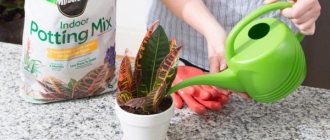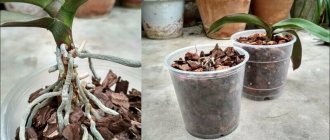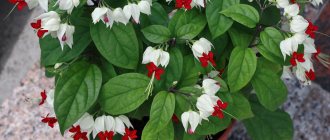Violet (Viola) is a genus of plants in the Violet family (Violaceae). Africa is considered to be its homeland, but the specific location is not known. Most species in their natural environment prefer a moderate, humid climate and are found in the Andes, Japan, North America, New Zealand, Europe, southern Siberia, and Australia. Some varieties prefer subtropical and tropical climates and choose the lands of South Africa and Brazil. Forest violets are found in forest clearings in deciduous forests. The plant chooses open or slightly darkened habitats. In Russia, violet is often called Saintpaulia.
INTERESTING: Violets bloom for 9 - 10 months at any time of the year.
Biological description
Violet is one of the most beautiful and popular indoor plants that blooms all year round. Saintpaulia does not have a single stem and has a shallow root system. It is a rosette of leaves that is attached to the root system.
The leaves are leathery, fleecy, broadly oval in shape. The length reaches 8 cm. Depending on the variety, the color varies from light green to dark green; there are also specimens with white leaf blades, variegated or with a border. The color on the inside may be purple. The leaf type is divided into female and male. The female type has a light spot at the base of the leaf blade, while the male type has a uniform color. The edge is wavy, jagged or smooth.
The flowers are small and numerous. Collected in inflorescences of the brush. Their diameter ranges from 3 to 8 cm. The color of the petals is varied, it can be one-color, two-color or multi-color. The huge number of bred varieties can surprise you with borders, spots or stripes of different colors on the flowers. Terry, semi-double or simple along the edges can be corrugated, wavy, fringed.
The fruit is a capsule with small seeds.
INTERESTING: One flower can bloom from several dozen to several hundred flowers!
What are the popular representatives called?
Medicinal properties of the tricolor violet flower - description of the plant
This beautiful flower is especially popular among gardeners. They can be found both in gardens and on the windowsills of many apartments.
There are three popular types of indoor violets:
- Gronte. The leaves are purple or bright green. The height of the bush reaches 6 cm, and the width is 5 cm. The shade of the buds is blue-lilac;
- velvet saintpaulia. Its leaves are dark green and its flowers are blue-violet. Their size is about 5 cm;
- violet flower. The color of the flowers is blue-violet. The leaves are dark green.
Violetflower
Home care
Violet is a rather whimsical and capricious plant. Therefore, it is better to know in advance all the intricacies of care at home, so as not to encounter illness or death of a beautiful flower. Placing on the south side is strictly not recommended. The sun's rays burn the delicate leaves of Saintpaulia, leaving burns on them.
Temperature
For breeding and young individuals, the temperature should be from 24 to 27 o C. The optimal temperature for already rooted plants is 22-24 o C. Adult violets tolerate both low temperatures of 10 o C and high temperatures of 35 o C. Saintpaulia does not tolerate temperature changes well: leaves rot and the flowers fall off.
Humidity
The optimal humidity for this flower is 50-60%. During the breeding season, violets especially need high humidity. It is created by creating a greenhouse effect.
Watering
Watering is carried out in several ways: top and bottom. The top is carried out carefully, without eroding the soil. Care should be taken to ensure that the leaves and their attachment points always remain dry to avoid rotting. Bottom watering is carried out through a tray. The pot is placed in a pan of water for 40-60 minutes. After this time, the remaining water must be drained. Overmoistening of the soil leads to rotting of the violet root system. The latter method is optimal for the plant, since the leaves and rosette remain dry, and the soil absorbs a sufficient amount of moisture. At moderate temperatures, watering is carried out once every 7-10 days, at hot temperatures - once every 4-6 days.
Priming
For the favorable cultivation of violets, the soil must be prepared loose, breathable, and slightly acidic. For convenience, stores already sell ready-made mixtures for Saintpaulia. To prepare soil at home, you need to prepare: 1 part washed sand, 3 parts slightly acidic peat, 1 part humus, 2 parts leaf soil, 0.5 parts turf soil, 0.5 parts charcoal. The latter is added for looseness, maintaining moisture levels, and bactericidal properties. Be sure to line the bottom of the pot with drainage. This composition has a beneficial effect on the root system of the violet, and you will get a beautiful flower blooming profusely.
Capacity
When growing a plant from the very beginning, a pot with a capacity of 4-5 cm in diameter is suitable. As the plant grows, it is transplanted into a larger container. Adult plants are transplanted into a larger container when their size has doubled in size than the previous pot. Check for drainage holes to avoid water stagnation.
Fertilizers
After transplantation, violets are not fertilized for 4-5 months. When the leaves begin to actively grow, it is necessary to feed them with universal violet fertilizer once every 10 days. It is better to halve the concentration of solutions so as not to burn the root system of the flower.
Pinching
The lower leaves fade and take all the nutrients from the plant. They must be cut along with the cuttings. Dry flowers and faded leaves also prevent lush blooms, so these too should be removed when detected.
Transplantation at home
For the lushness of these perennials, annual replanting is necessary. The first signs that the plant requires replanting are:
- white layer of soil on the surface;
- a small amount of soil entwined with the roots of the plant.
Transplantation is carried out after Saintpaulia finishes blooming. If necessary, you can do this procedure in the spring. To replant, you need to take a pot slightly larger than the previous one. It is advisable to use plastic containers to avoid rapid drying out of the soil. Place drainage at the bottom of the container. Prepare the soil yourself, as described earlier, or buy a ready-made mixture for Saintpaulias and violets. An adult plant is inspected for rotten roots and leaves. Found rotten parts of the plant are removed and sprinkled with crushed activated charcoal or charcoal. After removing faded flowers and withered leaves, the plant trunk is exposed, so it should be replanted deeper. Young plants (up to 3 years old) and miniature varieties are transplanted using the transshipment method so as not to disturb their root system. The old soil is not shaken off. This method can be used to replant blooming violets if necessary. Such violets are not watered, but rather greenhouse conditions are created to ensure optimal humidity for better adaptation.
Reproduction
There are several types of violet propagation:
- using peduncles;
- leaf;
- stepchildren;
- leaf fragments.
It is necessary to propagate Saintpaulia only from a healthy and strong plant. Let us consider in detail each method of reproduction.
With the help of flower stalks
Its peduncles are responsible for the reproductive function of the violet. If Saintpaulia is too young and has not gained enough foliage, but is already blooming, then in this way you can increase the offspring of a certain species. Reproduction by a peduncle occurs in the same way as by a leaf, only a little more complicated. With this method, the plant does not always produce roots. It is better to choose a peduncle with large stipules. You can start the procedure immediately by cutting them off, or you can wait until they bloom. The flowers themselves are not needed with this method. The peduncle is cut off almost at the very base, leaving 1-2 mm. The soil used is the same as for planting and rooting sheets.
IMPORTANT: To strengthen and better root the peduncle, it is recommended to add zircon-based preparations to the soil before planting.
Use a small container, maybe a plastic cup. Cover the finished seedlings with film, sometimes opening it slightly for ventilation. The engraftment process lasts about 1.5 months.
INTERESTING: With this method of propagation, the violet blooms earlier and the duration of flowering increases several times.
Rooting a leaf
This method is the simplest. From the mother plant, you should choose the youngest, juiciest, healthiest leaf, which is located above the lower counterparts. You can simply break it, but it is better to use a clean, disinfected tool. When pruning, you need to leave the cutting about 5-6 mm, sprinkle it with coal or ash. The leg itself should not exceed 4 cm. The cut should not dry out, so it should be rooted immediately. Root the cuttings in soil or water.
- Priming. It is recommended to use a small container. Drainage is also placed at the bottom and filled with pre-prepared soil. When planting, the soil should be well watered and covered with a plastic bag to create a greenhouse effect to ensure optimal moisture for rooting. In this case, it is recommended to carefully monitor the condition of the sheet. If after 3-4 days it begins to wither, then it is necessary
update the cut and plant the plant again. A favorable outcome will be young shoots one and a half months after rooting. The advantage of this method of propagation is that the young plant, which has taken root, does not have to be disturbed.
- Water. To reproduce using this method, it is best to use boiled water with activated carbon to disinfect the aqueous solution. Place the cuttings placed in water in a shaded, warm place. With this method, you should carefully observe the place where the cutting is cut. When it rots, it is necessary to cut it back to a healthy place. If the result is positive, the leaf will give roots, after which it can be safely planted in a container with soil.
IMPORTANT : It is necessary to ensure that only the cutting is in the water. The sheet plate should under no circumstances touch moisture to avoid rotting.
Stepchildren
The stepsons of the violet are rosettes formed in the axils of the leaves along the length of the trunk. It is not always possible to distinguish them from the peduncle. Therefore, it is necessary to wait until they reach a length of 1-2 cm and make sure that this is a neoplasm. Some gardeners remove them to preserve the appearance of violets.
IMPORTANT: It is necessary to remember that a new peduncle will never appear at the site where the stepsons were removed.
Reproduction by stepsons is the easiest and most convenient way of reproduction. If you find a stepson, do not rush to immediately separate it from the mother plant. It is necessary to wait until it forms 3-4 pairs of leaves. Then carefully separate the newly formed plant from the main one with sharp scissors or tweezers. The shoot is placed in soil for violets and greenhouse conditions are also created for it. After some time, the stepson will turn into a full-fledged plant and will delight you with its abundant flowering.
Fragments of a sheet
This method of propagation is sometimes a salvation for the violet itself. A broken piece of a leaf, the beginning of rotting of a leaf plate - from all this you can grow a new flower. All damaged parts of the fragment must be cut out with a disinfected sharp object. Pruning should take place between the lateral veins without damaging them. These veins will act as cuttings when growing a new plant. Each leaf can be divided into several parts, the main thing is to leave at least one vein untouched in each fragment. Select it as a cutting about 1 cm long and plant it in the ground, just as with normal leaf propagation. If the vein cannot be separated, then you can plant it as a whole, deepening the lower part into the ground. The finished containers are placed in mini greenhouses.
Diseases and pests
Incorrect care leads to various diseases of violets. They are both infectious and non-infectious. Let's look at the most common ones.
Late blight
When affected by late blight, the leaves curl, the flowers droop, accompanied by separation of the roots. The main culprits of this disease are:
- insufficient lighting;
- high humidity;
- low temperature.
Creating comfortable conditions will add strength to the violet, and it will cope with this illness:
- treat the soil and the plant itself with Fitosporin;
- replant in clean, disinfected soil with drainage;
- remove damaged roots and parts of the plant;
- increase illumination, maintain optimal temperature and humidity;
- It is advisable to root the unaffected upper leaves to grow a new flower.
Root rot
Excess moisture and lack of good drainage leads to the fact that the Saintpaulia root system begins to die. The leaves show the first signs of this disease. They droop and take on a dull appearance. The roots, upon examination, become soft and change color to brown. Putrefactive fungi form and destroy the plant. In this case, it is necessary to take urgent measures. Carefully remove the violet from the soil and wash the roots of the old soil. At the same time, remove already damaged roots. Purchase the drug Fitosporin and place the violet root system in it before planting in new soil. It is not recommended to use the same soil to avoid re-infestation. Rinse the pot well or use a new one.
Brown rot
The spores that cause this disease are detected by thin and softened stems in young rosettes, planted stepsons and rooted cuttings. Traces of their spores can also be found on the soil under the leaves. This disease is infectious and can infect other plants. Measures should be taken at the first sign of detection:
- treat the soil with PhytoDoctor, Fitosporin or Trichodermin;
- Treat leaves, stems and shoots with antifungal fungicides (Fundazol, Skor).
To avoid this problem you need to use some tips:
- rooting should be shallow;
- the soil should be special for violets;
- good drainage;
- Watering is frequent, but not strong.
Stem rot
If propagated incorrectly, the plant may suffer by rotting of the stems. The flower quickly dies and such violets are practically impossible to save. There can be many reasons:
- attack of pests on a young, immature plant;
- dirty and undisinfected instruments;
- deep wounds that have not healed;
- stagnation of water in young plantings;
- sections not treated with antifungal agents during propagation.
Botrytis or gray mold
You can recognize the disease by the gray fluffy coating on the leaves. At the same time, the stems of the plant soften and weaken. If you do not pay attention to this, then over time the violet will become completely covered with a white coating and die. The cause of this disease is spores in the soil. Flower treatment consists of:
- immediate removal of all affected parts of Saintpaulia;
- treatment with fungicides for the treatment and prevention of disease.
To avoid this unpleasant scourge, you must follow some care rules:
- protect from temperature changes;
- maintain distance between plants;
- When watering, prevent water from getting on the leaves and control the amount of watering;
- maintain optimal air humidity;
- prevent the formation of vapors on the walls of the container during reproduction.
Powdery mildew
It can be real and false. When false, the stems and leaves of violets become covered with brown stains. Real - accompanied by white lesions on leaves and stems. The cause of infection lies in the soil. The disease can be brought home either with a new plant or by using old soil or untreated soil.
For control and prevention you should:
- regularly remove dust on leaves and pots;
- create additional lighting;
- increase the room temperature;
- carry out additional fertilizing with phosphorus-potassium fertilizers;
- adjust humidity.
Violet is susceptible not only to many diseases, but also to attacks by harmful insects, which can cause its death.
Spider and cyclamen mites
These insects are carriers of infections and diseases. Spider mites can be identified by red punctures on the leaves on which webs form. Cyclamen leaves yellow marks, damaging the stems and young leaves. If infected, treatment with insecticides is recommended.
Aphid
The insect is very small and greenish in color. Sucks juice from buds, leaves and petioles. The toxic substance spreads throughout the plant, slowing its growth. If infected, the violet must be washed under water with a soapy solution. In case of severe sepsis, also rinse with insecticides.
Mealybugs
The first signs of damage: stunted growth, a mushroom smell from the soil, a change in the color of the leaves to yellow or gray, rotting of the roots. Since insects reproduce quickly, you should immediately treat the violet with insecticides.
Nematodes
A very small pest. If you find dark green spots on the leaves of Saintpaulia, which darken over time, you should resort to methods of combating this insect. First, you should remove the plant from the pot and inspect it, since the growing point begins to dry out first. To combat it, it is recommended to completely replace the soil with a well-disinfected one. Treat the violet with insecticides at the initial stage. In a more neglected form, the flower is almost impossible to save.
How to care for Saintpaulia in winter
In winter, the main procedures for caring for violets are:
- Good lighting of the flower using fluorescent lamps or fluorescent lamps for up to 12 - 14 hours a day, alternating with the dark for up to 8 hours.
- Maintaining the ambient air temperature in the room at least 20 °C, without sharp fluctuations in one direction or another, without drafts during ventilation.
- Regular moderate watering with warm water up to three times a week.
- Increased air humidity in the room where your Saintpaulia lives. All ways to increase humidity are welcome - household appliances, containers of water, trays with wet expanded clay, wet towels on all radiators and other tricks that you can come up with.
- On cold windowsills under pots of violets there should be thick, at least 3 cm thick, plastic or wooden stands that protect the roots of the flower from hypothermia.
- Violet leaves should not touch cold glass windows, be careful about this.











